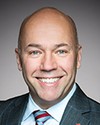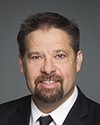That's the second phase of Cuystwi. That's built off the initial program we started for 10- to 12-year-olds. The communities we worked with said that they wanted some programming for youth who are a little bit older.
As you can see on the slides, it's set up as a quest map so that's what it would look like online if you went into it and logged onto the training. Youth can sign up either themselves or through a youth worker after the community has requested a link. It goes through 24 different lessons on various different topics. There is stuff around colonization, racism, learning about our history, talking about wellness, learning what healthy relationships look like, sexuality, and learning about emotions and self-regulation. It's really an opportunity to start conversations, maybe, on topics that aren't always talked about in our communities or that people aren't necessarily comfortable with, and that's why we also have a facilitator manual that we will provide to the communities as a resource to help their youth go through the training.
But really it's an opportunity for communities to make it their own. There is already a lot of wonderful programming going on in communities, and this is another resource that they can use to support it. We've had our pilot communities run it in on-reserve schools. We've had people do it in youth centres, summer camps, and anywhere that would complement something that was already happening, usually.
Some communities have used it as a reason to gather in the first place so that's what they were going to do, go through the training with their youth. Maybe they would meet once a week or something, and then we really encourage them to bring in elders or people who have specific cultural teachings or values. Some people used it as an opportunity to talk about the content, but also to learn to can fish or to build a smokehouse. We had people who would use it as a way to start a drum group. One of our communities had a very small drum group but, because there was community buy-in and interest, the drum group actually ended up with about 60 members who were showing up every week together, which is pretty amazing.
We have people who used it as an opportunity to put it with some physical activity and started a judo club, and then this was a component of it. It's really meant to be a versatile program that can really just be taken as communities want to use it.



